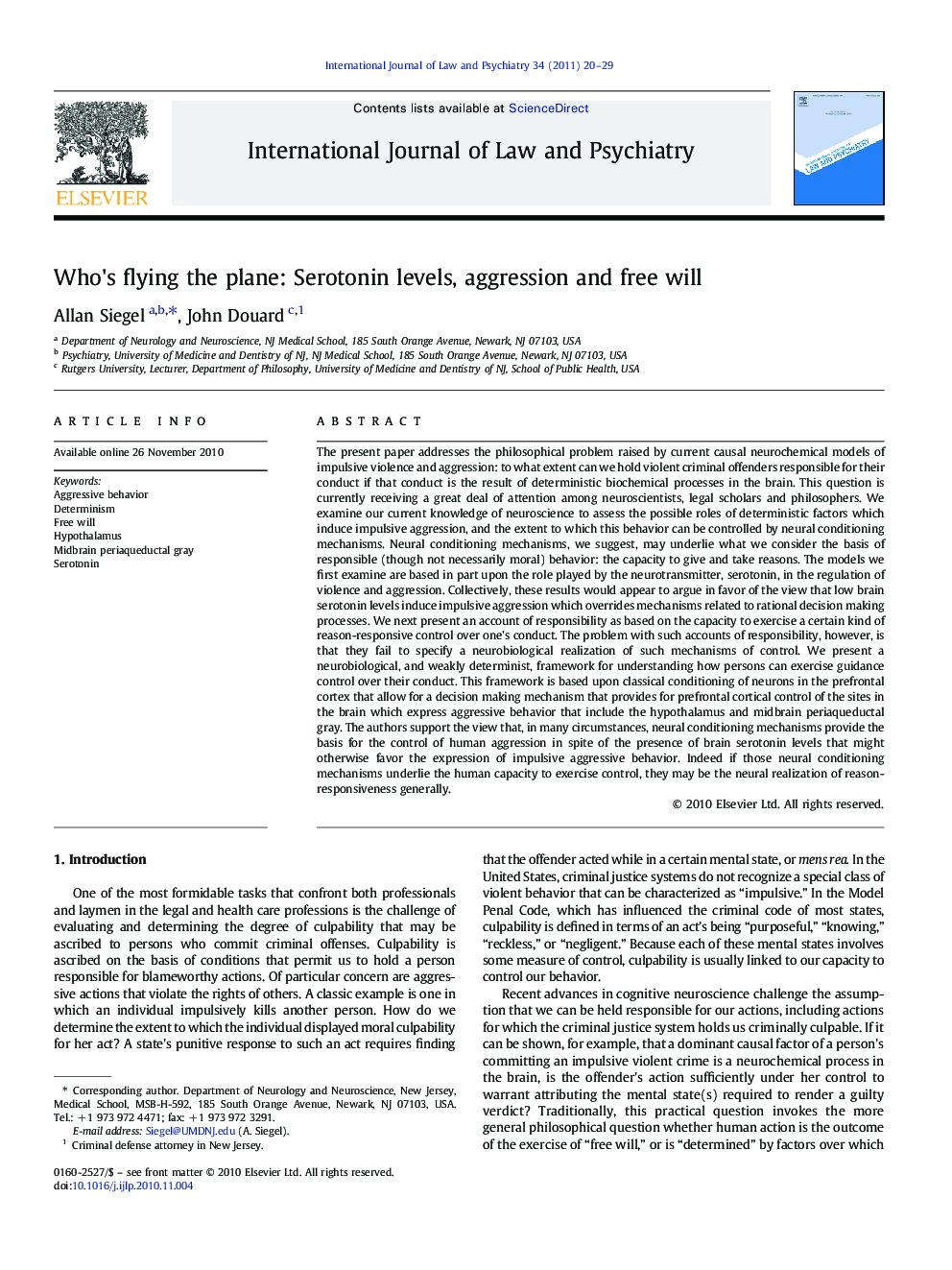| کد مقاله | کد نشریه | سال انتشار | مقاله انگلیسی | نسخه تمام متن |
|---|---|---|---|---|
| 100983 | 1422304 | 2011 | 10 صفحه PDF | دانلود رایگان |

The present paper addresses the philosophical problem raised by current causal neurochemical models of impulsive violence and aggression: to what extent can we hold violent criminal offenders responsible for their conduct if that conduct is the result of deterministic biochemical processes in the brain. This question is currently receiving a great deal of attention among neuroscientists, legal scholars and philosophers. We examine our current knowledge of neuroscience to assess the possible roles of deterministic factors which induce impulsive aggression, and the extent to which this behavior can be controlled by neural conditioning mechanisms. Neural conditioning mechanisms, we suggest, may underlie what we consider the basis of responsible (though not necessarily moral) behavior: the capacity to give and take reasons. The models we first examine are based in part upon the role played by the neurotransmitter, serotonin, in the regulation of violence and aggression. Collectively, these results would appear to argue in favor of the view that low brain serotonin levels induce impulsive aggression which overrides mechanisms related to rational decision making processes. We next present an account of responsibility as based on the capacity to exercise a certain kind of reason-responsive control over one's conduct. The problem with such accounts of responsibility, however, is that they fail to specify a neurobiological realization of such mechanisms of control. We present a neurobiological, and weakly determinist, framework for understanding how persons can exercise guidance control over their conduct. This framework is based upon classical conditioning of neurons in the prefrontal cortex that allow for a decision making mechanism that provides for prefrontal cortical control of the sites in the brain which express aggressive behavior that include the hypothalamus and midbrain periaqueductal gray. The authors support the view that, in many circumstances, neural conditioning mechanisms provide the basis for the control of human aggression in spite of the presence of brain serotonin levels that might otherwise favor the expression of impulsive aggressive behavior. Indeed if those neural conditioning mechanisms underlie the human capacity to exercise control, they may be the neural realization of reason-responsiveness generally.
Journal: International Journal of Law and Psychiatry - Volume 34, Issue 1, January–February 2011, Pages 20–29